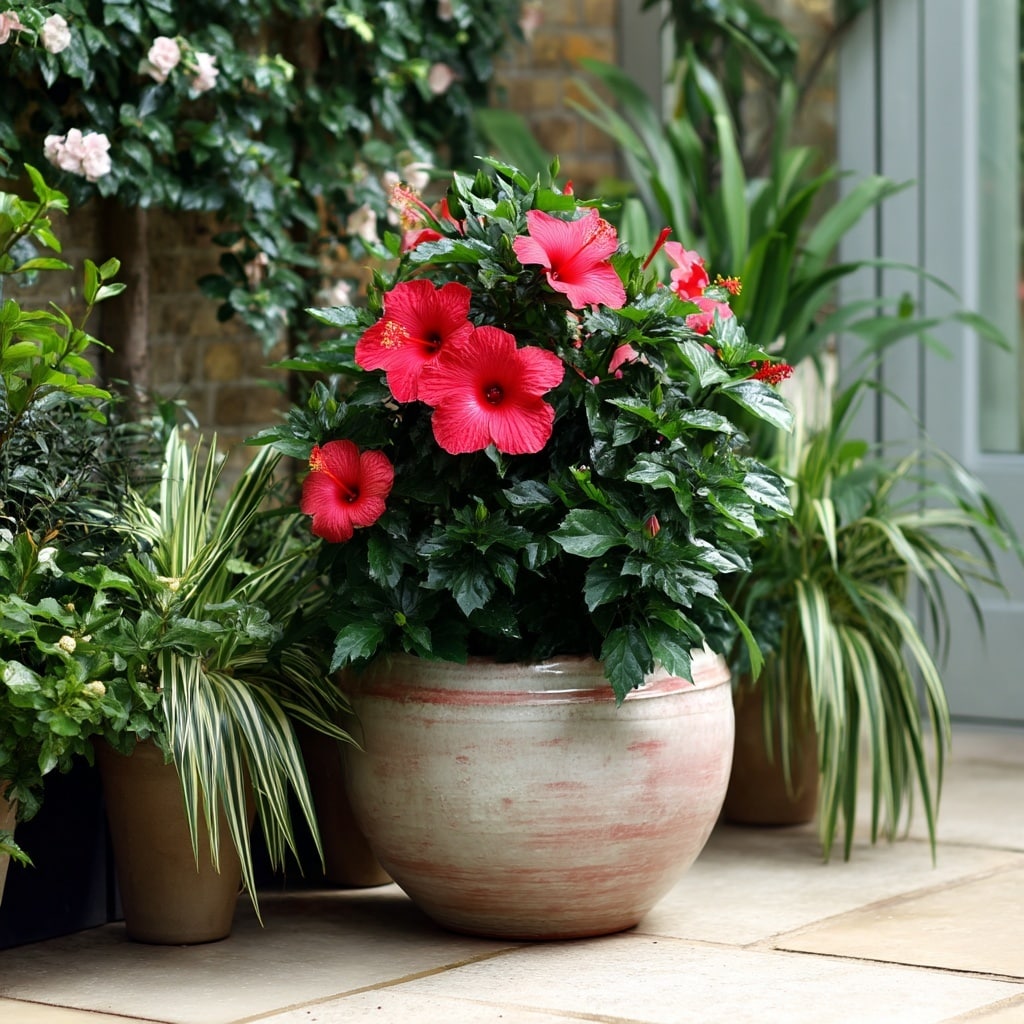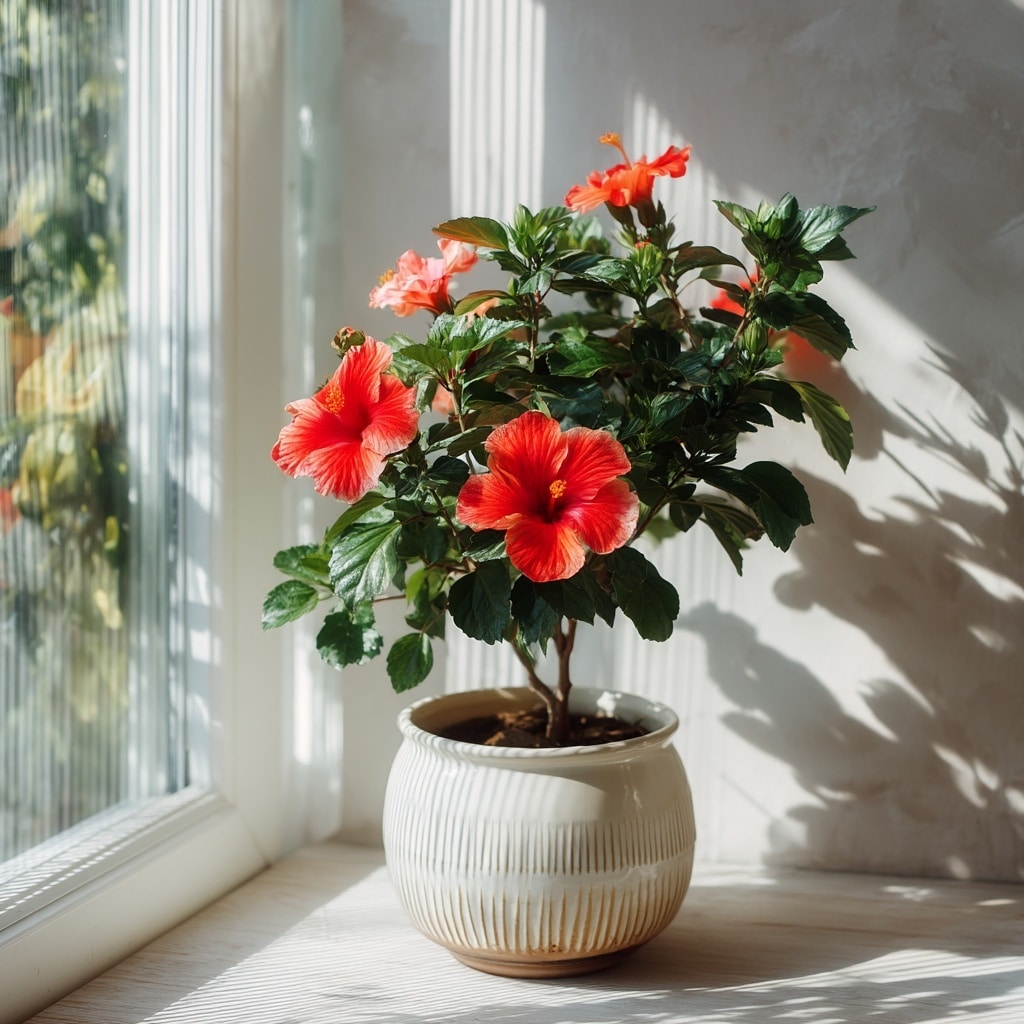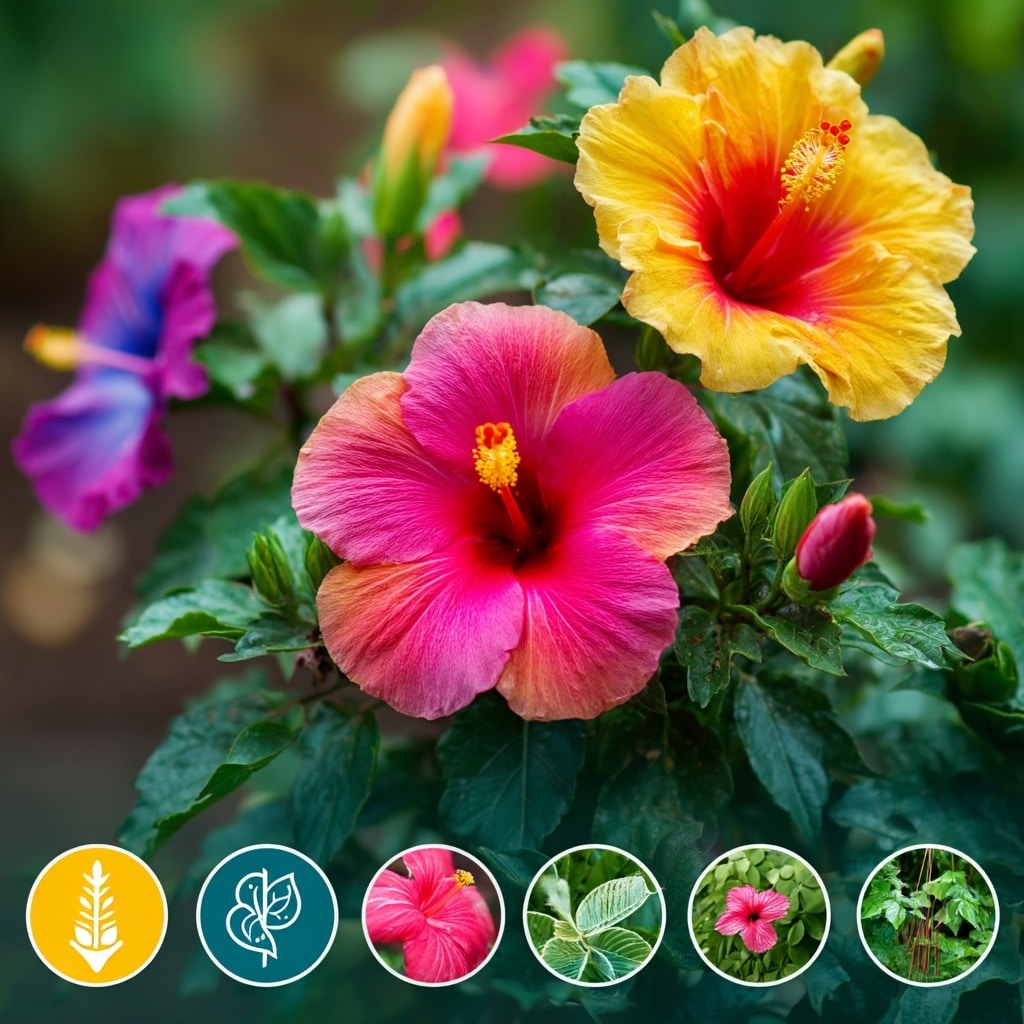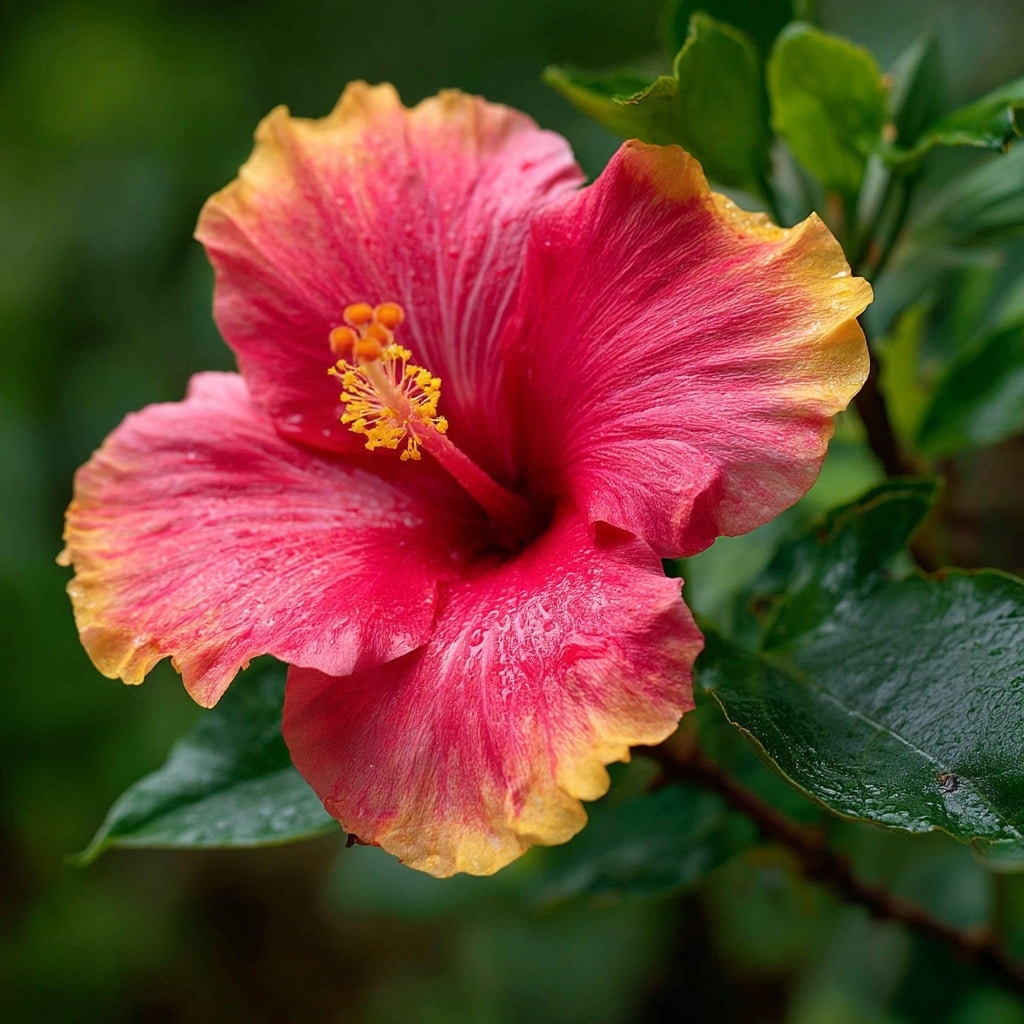Tropical hibiscus brings a bold splash of paradise right to your backyard. With its vibrant, oversized blooms and lush green foliage, this striking plant instantly elevates patios, borders, and garden beds. Blooming from spring through fall, tropical hibiscus creates an almost uninterrupted display of dazzling color that ranges from fiery reds to golden yellows, soft pinks, and dramatic multi-tones. Each flower might only last a day or two, but new ones keep coming, ensuring a continuous show throughout the season. Whether you’re in a warm climate or using containers to brighten up your deck, tropical hibiscus offers both beauty and versatility — making it a favorite among plant lovers who want to bring that tropical feel closer to home.
Table of Contents
🌿 What Makes Tropical Hibiscus So Unique?
The tropical hibiscus (Hibiscus rosa-sinensis) is a tropical treasure known for its dramatic, dinner-plate-sized blooms that can reach up to six inches across. These vibrant flowers come in a spectacular range of colors — bold reds, brilliant oranges, warm yellows, soft pinks, and stunning multicolored patterns. Each blossom is short-lived, but the plant’s non-stop blooming habit keeps your garden lively throughout the warmer months.
Its glossy, deep green leaves provide a lush backdrop to the colorful display, giving your garden an exotic look even when the plant isn’t flowering. With its upright growth and manageable size, tropical hibiscus works beautifully in gardens big or small, and it looks just as eye-catching in containers as it does in the ground.
🌞 Growing Habits of Tropical Hibiscus

If you’re looking for a long-blooming plant that thrives in warmth, the tropical hibiscus won’t disappoint. This sun-loving beauty produces flowers from early spring until the first fall frost, offering months of color with minimal effort. Its bloom cycle is prolific — even though each individual flower lasts just a day or two, the plant is constantly pushing out new buds.
Tropical hibiscus grows best in full sun and well-drained soil. In warmer climates (USDA zones 9–11), it acts as a perennial, holding onto its evergreen foliage all year. In cooler zones, it’s typically grown in pots and brought indoors during winter to protect it from freezing temperatures. With the right care, it will reward you with vibrant blooms season after season.
Versatility and Garden Uses

Few plants are as adaptable and eye-catching as the tropical hibiscus. Whether you’re designing a container garden for your patio or adding a bold accent to your flower bed, this plant fits right in. Its compact growth habit makes it ideal for pots, allowing you to easily move it indoors when temperatures drop or rearrange your outdoor layout throughout the season.
Tropical hibiscus works beautifully in mixed borders, where its lush green foliage and vivid flowers offer contrast to perennials and shrubs. It’s also a showstopper when planted in rows along fences, near pool areas, or as a standalone focal point in a sunny corner of your yard. No matter the setting, tropical hibiscus adds instant tropical flair.
Attracts Pollinators and Wildlife

Planting a tropical hibiscus doesn’t just add beauty to your garden — it invites life. The plant’s brightly colored blooms are a magnet for hummingbirds, butterflies, and beneficial insects. These visitors are more than just delightful to watch — they help with pollination, contributing to a healthier garden ecosystem.
By including tropical hibiscus in your outdoor space, you’re supporting local wildlife while enjoying the movement and color they bring. If you’re trying to create a pollinator-friendly garden or want to attract more biodiversity to your landscape, tropical hibiscus is an excellent choice. Its continuous blooms ensure there’s always a fresh food source available for your winged visitors.
How to Care for Tropical Hibiscus in Cold Climates

While tropical hibiscus loves the heat, it can still thrive in colder zones with the right care. If you live outside USDA zones 9–11, your best option is to grow hibiscus in containers that can be moved indoors when temperatures fall below 50°F (10°C). Before the first frost, bring your plant inside to a sunny window or bright indoor spot.
During the winter months, water sparingly and avoid fertilizing until spring returns. The plant may drop some leaves or enter dormancy, which is normal. Once warmer weather arrives, you can gradually reintroduce your tropical hibiscus to outdoor conditions. With just a little effort, you can enjoy its vibrant blooms year after year — even in colder climates.
✅ Key Features of Tropical Hibiscus

- 🌺 Massive, vibrant blooms in tropical colors including red, orange, yellow, pink, and multicolor
- 🌞 Continuous flowering from spring to fall for months of nonstop color
- 🌿 Glossy evergreen foliage adds lush beauty even when not in bloom
- 🪴 Ideal for containers, borders, or patio décor, offering design flexibility
- 🦋 Attracts hummingbirds and butterflies, boosting garden biodiversity
- 🌡️ Perennial in zones 9–11, with easy overwintering indoors in colder climates
- 🌱 Compact and manageable growth habit, perfect for small gardens or tight spaces
These standout features make the tropical hibiscus a top pick for gardeners who want a mix of visual impact, low maintenance, and seasonal delight.
Bring Tropical Hibiscus Home
Whether you’re creating a lush patio oasis, enhancing a sunny border, or just craving a burst of vibrant color, tropical hibiscus is the plant that delivers. Its showy flowers, easy care, and ability to attract wildlife make it a standout in any garden. From warm southern yards to chilly northern balconies, tropical hibiscus adapts beautifully with just a bit of care. If you’re ready to enjoy months of tropical charm and color, make room for this blooming superstar in your garden plan — you’ll be rewarded with beauty that never goes unnoticed.


